Sonos Play:5 (2015) Review
Sonos Play:5 (2015) Review
The Sonos Play:5 is a great multiroom speaker
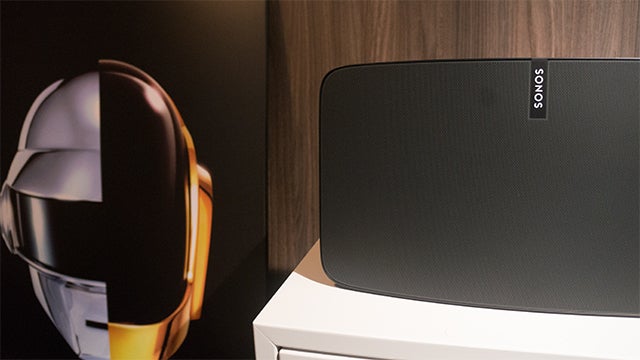
Verdict
The Sonos Play:5 (2015) is one of the best wireless speakers money can buy. It has great sound, great software and the design to suit a classy house or flat. It's now been replaced by the Sonos Five (2020)
Pros
- Fantastic, warm sound
- Looks the business
- TruePlay generally helps in certain environments
Cons
- TruePlay is tricky to set-up
- Single app approach can be a pain
Key Specifications
- Review Price: £429.00
- TruePlay
- Support for loads of streaming services
- Capacitive buttons
- Improved wireless
- S2 compatible
The Play:5 (2015) is Sonos’ largest speaker for music playback. If you want to stream from Spotify or another music streaming service, this is the model you need.
It offers bigger, better sound than either the Play:1 or Play:3. As you’d hope for the £499 price, this is the sort of multi-room speaker designed to be used as your main hi-fi system.
For long-term Sonos fans, the current Play:5 sounds a lot better than the original if you’re considering an upgrade.
Related: Sonos One review
Sonos Play:5 design — Demands plenty of space
If you want a Sonos Play:5, you’d better prepare to make space. Unlike a Play:1, this is a speaker that demands space to operate. At 37cm wide and 20cm tall, it’s no bedside speaker.
It’ll blend into most rooms easily enough, though. You have a choice of white or black, although both finishes have a dark front speaker grille. The casing is high-quality plastic, and the grille metal.
Short on space? The Sonos Play:5 can sit on its side, but doing so turns it into a mono speaker. If you have the best part of a £1000 to play with, you can purchase two of these and turn them into a stereo pair.
Related: Best Bluetooth speakers
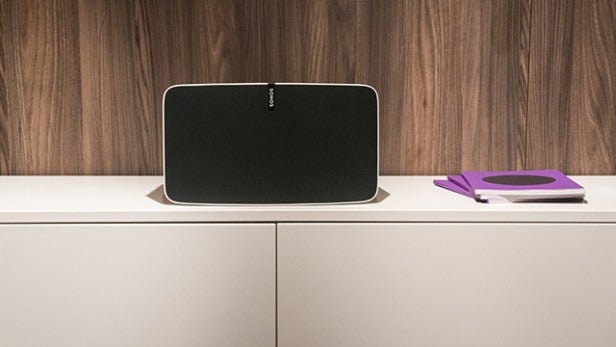
Other Sonos speakers use physical buttons, but the Play:5 has a touch panel on the top plate instead. This simplifies the look, although there are some icons so you’re not left swiping blind.
There’s a play/pause pad, and the four-dot markers to each side to alter the volume. Swipes across the surface change tracks.

These are doubly handy because you don’t need to use the Sonos app to start listening to music. Press the play button and the Sonos Play:5 will simply continue the album or the last played playlist.
The Play: 5 isn’t the best speaker for those with plenty of non-wireless sources, like a record player. There’s a 3.5mm jack around the back, but you need to use the Sonos app to select this input. Unlike some other wireless speakers, it doesn’t switch over automatically.
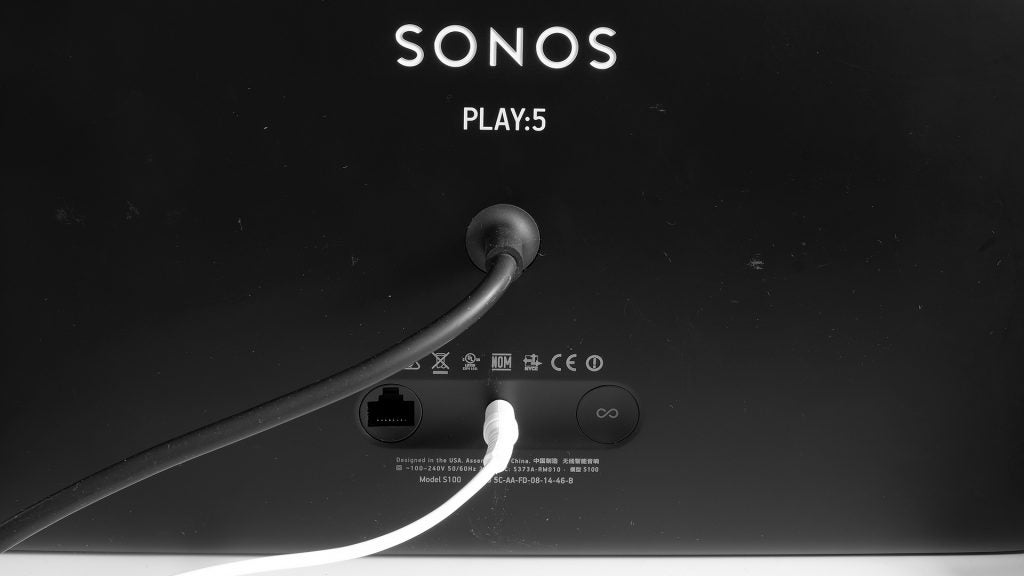
Sonos Play:5 features — Plenty of choice for streaming services
For those new to the Sonos universe, the Play:5 is controlled primarily through the Sonos Controller app. This aggregates a great many streaming services, including all the most popular ones. Apple Music and Google Play are here, as well as old staples like Spotify and Tidal. Not all require a paid subscription. TuneIn, for example, lets you stream radio stations for free. The Play:5 (2015) speaker is also compatible with the S2 operating system.
The Sonos app also lets you play any locally stored music and Plex is probably the best way to access your music library if it’s a big collection. You can add it to the app just as you would add Spotify – it just takes a few taps.
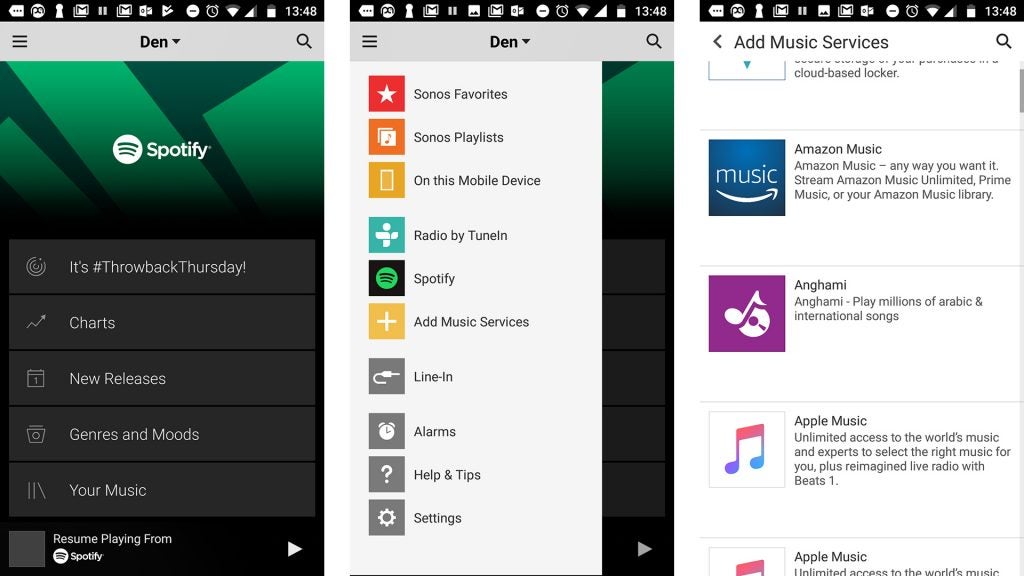
Spotify users can leave the app behind after initial setup too. The Play:5 supports Spotify Connect, letting you send tracks to the speaker directly from Spotify.
What’s missing is a good way to stream all sound from your phone, perhaps to listen to the audio of a YouTube clip or a mobile game. This can be done using a cable and the 3.5mm jack. But if you’re going to want to do this all the time, you may be better off with a wireless speaker that has Google Cast, AirPlay or Bluetooth, such as the Riva Festival.
The Sonos Play:5 does now support Amazon Alexa (which did not do at launch), though this only available through an additional Echo speaker and not built-in.
In the earlier years, set-up of a Sonos system required the Bridge to wireless connect the speakers. Now you can just boot up the app and type in your Wi-Fi password. If there are any issues there’s an Ethernet socket on the back, and setup takes just a few minutes.
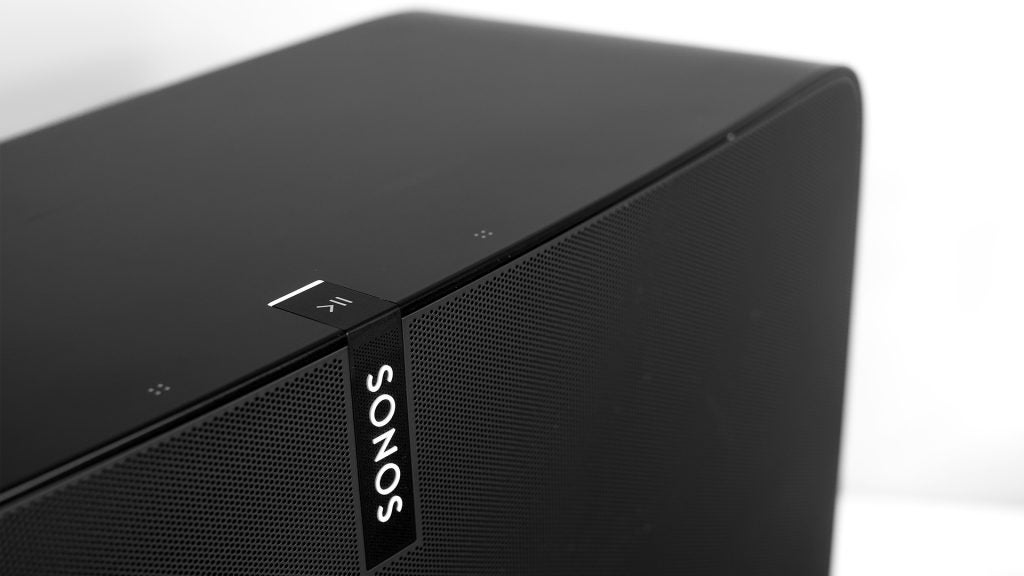
If you’re planning to buy several Sonos speakers, you’ll be glad to hear multi-room is easy to control too. When you add a Play:5 or another Sonos speaker to your network you give it a name, which is usually the room in which it lives.
You can then group these speakers to get a song playing throughout the house. That said, I don’t think you need a giant multi-room setup to appreciate the Play:5. One of these speakers in the lounge and a Play:1 in the kitchen is probably all I’d need.
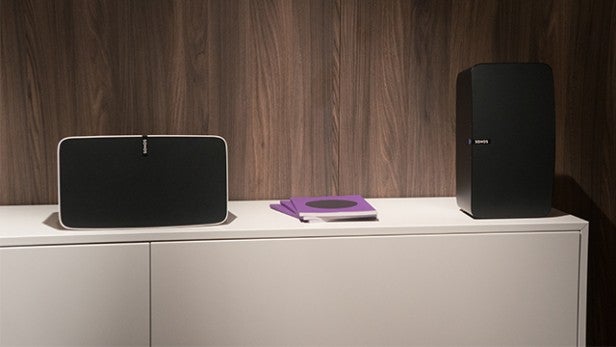
The Sonos Play:5 uses TruePlay. It’s only available on iOS and it lets you calibrate the sound to best suit a room’s acoustics.
You might have a Play:1 tucked away in the corner of a bedroom, or a Play:3 under a desk in a long kitchen. The likelihood of you being able to place them in a perfectly square room is rare. In typical Sonos style, setup is super simple. An ominous sound is emitted from the speaker as you slowly walk around the room, raising and lowering your iOS device.
I ran into quite a few issues trying to get TruePlay working. For it to work, the room has to be deathly quiet and even when I thought it was, the app told me it was too loud. After I closed all the windows, it finally worked, but if you live in a noisy spot using the feature may be tricky.
When it does work, though, it really makes a difference. Audio is cleaner, without sounding overly artificial, and it’s a godsend for attic rooms with sloping eaves or elongated kitchens.
You do need an iPhone or iPad, though, as there’s no Android support. Sonos says “It’s absolutely our intent to support Trueplay on Android so know we haven’t lost sight of this gap and are quite unhappy about the lack of Android support”. However, two years after the Play:5 launch it is still not here so I’d advise assuming it’s not coming.
The problem is that Android devices have different mics and approaches to audio, so there’s not enough control over what TruePlay will “hear” when tuning the system.
Sonos Play:5 sound quality — Impressive highs and lows
The Sonos Play:5 sounds fantastic. Sonos speakers have always impressed when it comes to sound quality, but the Play:5 takes things one step further.
Inside the classy exterior are six custom designed drivers, three mid-woofers and three tweeters. These components combine to pump out sound that is detailed, with impressive highs and lows and ridiculous amounts of volume, and all without any distortion.
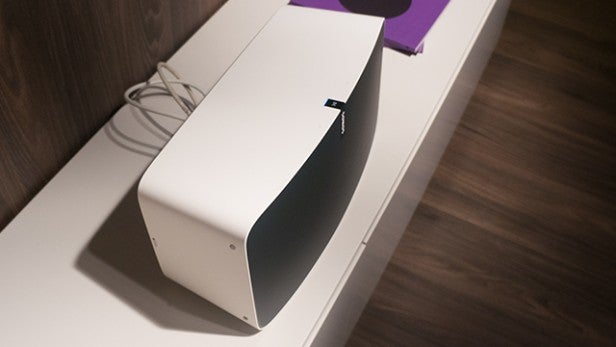
There’s a good amount of bass too, enough for hip-hop to come through as intended but not so much that it makes for uncomfortable listening of other genres. Bass depth is superb for a wireless speaker. There’s actual output in the 30-40Hz low sub-bass range. A lot of wireless speakers can’t reach anything like this depth.
For even better bass authority and tighter bass all-round, big spenders might want to consider pairing the Play:5 with a Sonos SUB. While the Play:5’s bass is powerful, it’s not quite audiophile-grade in its speed. You can actually improve the sound by reducing the bass a little in the Sonos app.
What really stands out is how well the Play:5 copes with varying genres of music. The woozy vocals and bassy sounds of A$AP Rocky or the synths of Chvrches both sound fantastic. The clarity and detail that comes across in vocal lead songs is equally impressive.
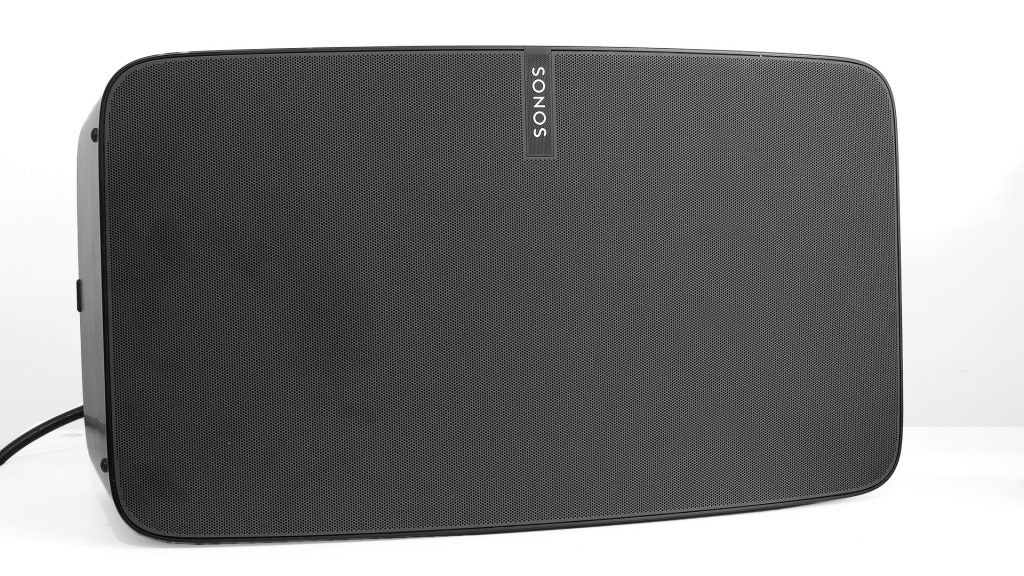
It’s loud too. This box can easily fill a large room with sound, making it perfect for parties. And the audio doesn’t get distorted when it’s pumped up. Though, like the original Play:5, I find it doesn’t perform quite as well at lower volumes. This thing is meant to be loud.
Another new feature for the 2015 Play:5 is how it can be orientated, though this will only really be of interest if you plan on picking up a pair.
As a single unit it can sit vertically or horizontally – a really nice touch is how the controls automatically sense the position and alter, so volume up is always facing up. Two Play:5’s paired vertically offer awesome stereo sound, while two paired horizontally are better for room-filling, immersive audio.
The Play:5 does not support true Hi-Res 24-bit audio files or audio nerd favourite DSD. However, unless you’ve spent an age building a Hi-Res library don’t get too worked up. You’d need a much higher-end setup to appreciate what limited percievable difference exists. High-quality FLAC, ALAC and WAV files, which are supported, will sound great anyway.
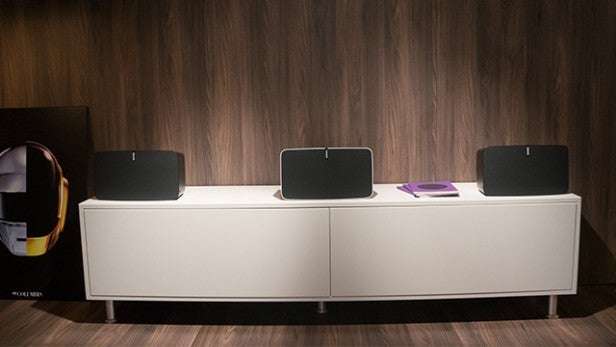
Should you buy the Sonos Play:5?
The Sonos Play:5 is one of the best wireless speakers money can buy. It has great sound, great software and the design to suit a classy house or flat.
If the still-restrictive Sonos approach is a turn-off, you should also look at the Bluesound Pulse 2 and Riva Festival. Both are great-sounding speakers that have slightly different approaches to wireless multi-room. The Riva in particular welcomes all sources, with Bluetooth, Wi-Fi, DLNA and AirPlay support.
However, if you’re happy to sink into the Sonos way of things, there are few reasons not to pick up a Play:5 if you can afford it. It’s a class act.


